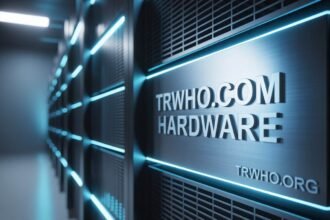Technology is the backbone of every modern business. The tools we rely on are crucial from enabling workflows to enhancing communication. But the lifecycle of technology is finite. That shiny new software or hardware you implemented last year? It’s already aging.
This is where Technology Lifecycle Management (TLM) comes in. TLM ensures that businesses get the most out of their investments while staying competitive. But what exactly is TLM, and how can your company implement it effectively?
This guide will explore what TLM is, why it matters, and how businesses can maximize returns by managing technology assets strategically.
What Is Technology Lifecycle Management?
Technology Lifecycle Management (TLM) refers to the process of planning, acquiring, using, maintaining, and retiring technology tools and assets within an organization. Its purpose is simple—to ensure that technology remains efficient, secure, and adaptable to business needs across its lifespan.
Whether you’re managing physical hardware (like servers and laptops) or digital solutions (like SaaS tools or custom software), TLM provides a structured framework to monitor, optimize, and replace your assets when needed.
Why Is TLM Crucial for Businesses?
The rapid pace of technological innovation means products become obsolete faster than ever. Staying ahead requires clear strategies to manage tech from acquisition to retirement. Here’s why TLM is vital for any organization:
- Cost Optimization: TLM ensures businesses only spend on solutions that align with their needs and upgrades occur before high maintenance costs or downtime.
- Improved Efficiency: By monitoring performance consistently, teams can address tech issues proactively, minimizing disruptions.
- Security Compliance: Older systems introduce security vulnerabilities. TLM helps ensure regular updates and timely replacements to mitigate risks.
- Enhanced Business Agility: Quickly adjusting to new technology empowers companies to respond to market changes more effectively.
- Maximized ROI: Technology investments are significant. Managing them wisely can extend their value, ultimately boosting the bottom line.
Stages of the Technology Lifecycle
TLM can be broken into distinct stages. Understanding these steps is essential for managing assets strategically:
1. Planning and Procurement
This is the starting phase where organizations assess their tech needs and plan investments accordingly. Key activities here include:
- Evaluating the current infrastructure
- Defining business goals and aligning them with tech requirements
- Budgeting and purchasing new systems or services
2. Deployment
During this phase, the acquired technology is implemented into the business workflows. This includes:
- Installation and configuration
- Training staff to utilize new tools efficiently
- Integrating with existing systems
3. Management and Maintenance
This stage involves ensuring technology continues to deliver optimal performance. Activities include:
- Monitoring system performance
- Applying software updates and security patches
- Conducting periodic evaluations to measure effectiveness
4. Review and Retirement
No technology lasts forever. At this stage:
- Outdated systems are replaced
- Valuable data from retired systems is migrated or archived
- Proper disposal methods are used to ensure compliance and environmental safety
Strategies for Effective TLM
Managing the technology lifecycle doesn’t happen accidentally. Here are some proven strategies for success:
1. Adopt a Proactive Mindset
Plan and budget for technology upgrades well in advance. Avoid being reactive and waiting for systems to fail before acting.
2. Track Asset Performance
Use monitoring software to collect data on efficiency, usage, downtime, and overall performance. Gather ROI insights from this data.
3. Collaborate Across Departments
No tech decision should happen in a silo. Engage key stakeholders from each department to determine pressing needs and system functionalities.
4. Create a Replacement Strategy
Establish rules on replacement timelines for your systems. For example, maybe laptops are replaced every four years while servers are capped at six years.
5. Allocate Budget Effectively
Resist overbuying tools or infrastructure you don’t need. Focus on high-value investments that align with strategic goals.
Tools for Technology Lifecycle Management
There’s an entire toolkit of solutions designed to make TLM easier. Below are a few categories of tools to consider:
- Asset Management Software (e.g., ServiceNow, Freshservice): Track, monitor, and document all technology assets within your organization.
- Monitoring Tools (e.g., SolarWinds, Nagios): Monitor system health, efficiency, and possible downtimes.
- Cloud Management Platforms (e.g., CloudHealth by VMware): Oversee cloud assets and automate scaling or cost optimizations.
- Security Tools (e.g., Bitdefender, Trend Micro): Maintain compliance and protect against growing threats in aging systems.
Best Practices and Common Pitfalls
Learn from these best practices and avoid common missteps when implementing TLM:
Best Practices:
- Audit Your Technology Regularly review your assets to fully understand your tech environment.
- Focus on Training Equip your team with the skills to leverage technology efficiently.
- Document Everything Maintain detailed records for easy decision-making.
Common Pitfalls:
- Neglecting Regular Evaluations Delaying updates can lead to costly downtimes or inefficiencies.
- Overlooking Cybersecurity Risks Failure to address outdated systems creates a higher risk of breaches.
- Focusing Solely on Acquisition Managing tech doesn’t end at purchase. Maintenance and strategic retirement are equally essential.
Case Studies and Examples
Case Study 1: E-commerce Startup
An e-commerce startup implemented a robust TLM strategy by partnering with an asset management software provider. By implementing clear replacement plans for tools like payment processors and inventory software, the company reduced downtime by 15% and increased customer satisfaction rates.
Case Study 2: Large Manufacturing Enterprise
A global manufacturer replaced its legacy machinery with IoT-powered systems under a structured TLM program. The company reduced maintenance costs by 30% and unlocked data insights to improve efficiency across production lines.
Future Trends in Technology Lifecycle Management
The future of TLM is evolving rapidly. Here are the trends every business should keep an eye on:
- AI-Driven TLM AI is making lifecycle decisions smarter by analyzing mountains of data to recommend optimal asset usage and retirement strategies.
- Sustainability Metrics With an increased focus on ESG (Environmental, Social, and Governance), companies are prioritizing eco-friendly retirement of tech assets.
- Integration with Cloud Solutions Incorporating hybrid and cloud environments into TLM is becoming widespread as businesses migrate away from legacy systems.
- Hyper-Automation Automating TLM workflows will make monitoring, troubleshooting, and purchasing seamless.
Unlock Maximum ROI with Smart TLM Practices
Technology Lifecycle Management isn’t just a strategy—it’s a necessity for businesses aiming to thrive in an increasingly tech-driven landscape. From reducing costs and improving efficiency to staying secure and adaptable, the benefits of TLM are enormous.
Don’t leave the lifecycle of your technology to chance. Start building your TLM strategy today to take control of your business’s future.









